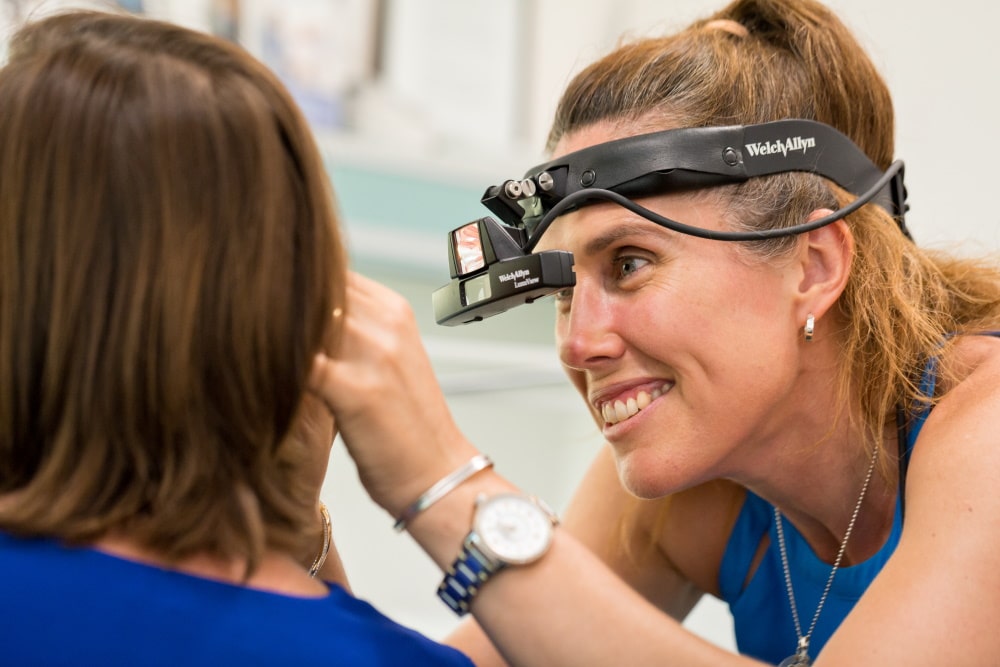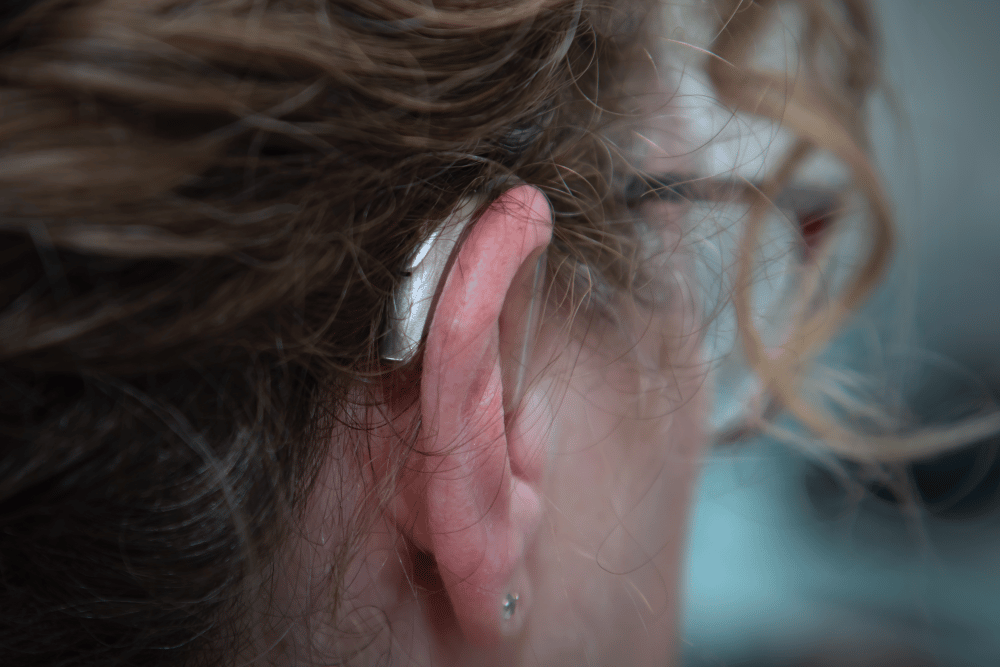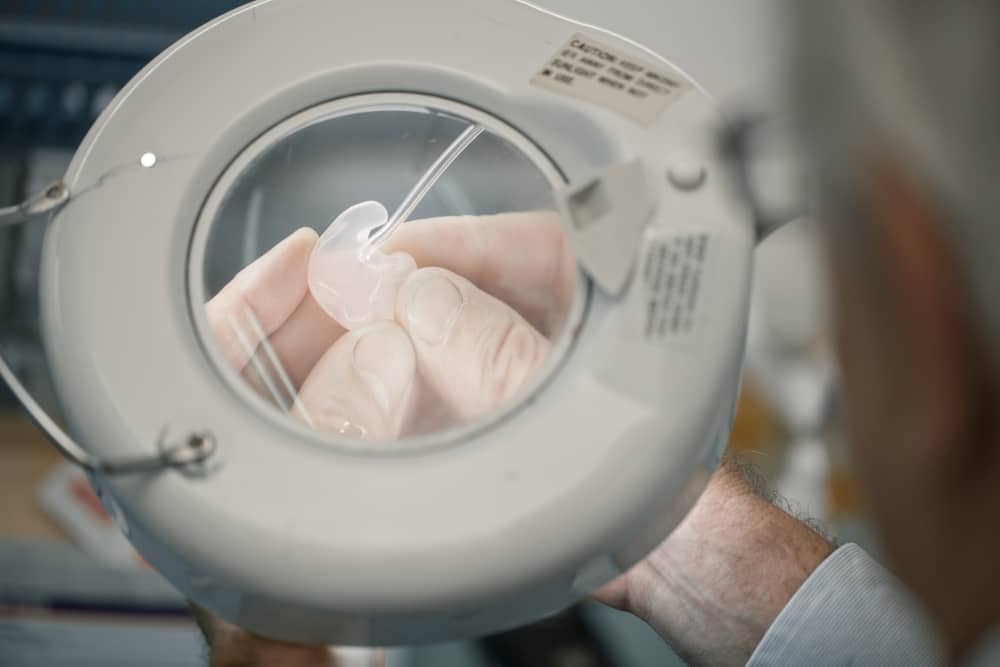- 74 Mount Street, Heidelberg, VIC, 3084
- Monday to Friday: 9am to 5pm
Misophonia
-
DWM Audiology > Our Services > Misophonia
What is Misophonia?
Misophonia is an intense aversion or abnormal sensitivity to specific trigger sounds, regardless of their volume, usually made by other people. Common trigger sounds include:
- The sounds of other people eating/swallowing/drinking/sniffing/ breathing etc.
- Repetitive sounds (eg pen tapping, keyboard tapping, eating sounds).
- Dogs barking
- Neighbour’s noises/music
- Noise from a nearby factory
Exposure to trigger sounds can have a powerful impact on individuals with misophonia disorder. It can evoke intense anger, rage, irritation, disgust, and distress. A misophonia reaction is intensified by trigger sounds that are often perceived as intrusive and intolerable, invading one’s personal space. This heightened sensitivity is accompanied by constant vigilance towards specific sounds and anticipation of anxiety when exposed to them.
Typically, the trigger sounds made by family members and heard in the home elicit the strongest reaction. This does not mean that children/teenagers can selectively control their misophonia reactions. It also does not imply that negative interpersonal relationships within the family are necessarily the basis for inducing this strong reaction. This home-based or family-based reaction in many cases appears to be related to the combined effects of the pervasive nature of sound, sharing the family space within the home or a sense of violation of the sanctuary of the home, and auditory hypervigilance influencing subconscious auditory processing.
Misophonia overlaps with many features of obsessive-compulsive disorder (OCD). However, as the immediate involuntary post-trigger sound exposure response is anger or rage, misophonia differs from anxiety disorders such as OCD and phobias. For this reason, a graded exposure approach is often not effective.
Misophonia, a condition characterised by a strong aversion to certain sounds, is not officially recognised in the current classification systems (DSM-5 or ICD-11). However, experts in the field have come together to create a consensus definition of misophonia in 2022. Their findings suggest that misophonia should be classified as a separate disorder rather than a symptom of another condition or syndrome.
This ongoing inquiry demonstrates the importance of understanding and addressing this prevalent issue.
Misokinesia is defined as a strongly aversive response to visually perceived movements, which may be associated with auditory trigger sounds, or be repetitive or involve excessive fidgeting, and can develop as a secondary reaction to misophonia.
When individuals with Misokinesia experience visual stimuli, they may involuntarily react similarly to those affected by Misophonia triggers. This reaction is characterised by heightened levels of anger, rage, and pronounced irritation or annoyance. A person with Misophonia may find visual triggers unsettling, leading to a range of intense emotional responses.
What can cause Misophonia?
Misophonia often originates from a specific childhood or teenage encounter where a family member’s sound triggers intense irritation. Vulnerability heightens when this occurs in a time of stress or trauma, like during unavoidable car rides. This auditory sensitivity is believed to involve the limbic system, a part of the brain that regulates emotion and memory.
This reaction has the potential to escalate so that those everyday sounds begin to appear unnaturally prominent and increasingly annoying/disgusting. An increasing range of trigger sounds can become increasingly intolerable.
Exposure to those trigger sounds in people with misophonia involuntarily induces escalating and disproportionally high levels of anger or rage, along with strong reactions of irritation or disgust.
Misophonia triggers the instinctual ‘fight or flight response’, making certain sounds feel like an unwelcome intrusion into personal space. This heightened sensitivity can cause significant distress to those with misophonia.
Those affected can feel overwhelmed by the intensity of these emotions. They may fear their ability to control their emotional reaction. They may resent being exposed to their trigger sounds. They are often embarrassed, ashamed, and guilty about the impact this has on the people around them, particularly their families.
How common is Misophonia?
Online forums, support groups and media attention in the last few years have raised awareness of misophonia, suggesting it is more widespread and can potentially encompass a more severe level of a reaction than was originally considered.
What are the Misophonia treatment options?
While there are predisposing factors increasing vulnerability, misophonia is an acquired condition, not hardwired from birth. The human brain is remarkably adaptive, constantly forming new neural connections within our nerve cells. This plasticity is a vital aspect of how our cognitive abilities develop and change over time. This means we can partially reverse the process that causes the symptoms with misophonia treatment.
Misophonia symptoms desensitisation involves:
Understanding the central auditory pathway, including the mechanisms of misophonia
Management of hypervigilance towards environmental sounds
- Sound enrichment strategies. This includes the creation of a portable “safe space” using sound as a shield from trigger sounds and to allow detachment from an unsafe environment
- Advice on the use of earplugs, including hearing aids set up as electronic filters/Bluetooth devices
The symptoms are different from anxiety disorders and OCD, our misophonia specialists advise against a graded exposure approach, which has been detrimental in some patients.
Looking for misophonia treatment in Melbourne?
Our misophonia specialists are here to help guide you in the right direction with personalised treatment.
FAQs
Is misophonia a symptom of anxiety?
The immediate involuntary response with misophonia following trigger sound exposure is anger/rage. While there are overlaps with anxiety disorders such as OCD (obsessive-compulsive disorder) and phobias, misophonia is considered a separate condition.
People living with misophonia are however often anxious about being exposed to their trigger sounds in an attempt to avoid the intense emotions experienced after exposure.
What causes a person to have misophonia?
Misophonia often stems from a specific instance in childhood or teenage years where a sound made by a family member elicited a strongly negative reaction of disgust or annoyance or intrusion. Some degree of monitoring or vigilance towards this sound can subsequently develop, reinforcing the subconscious negative evaluation of the trigger sound as important, so that the sound remains highlighted.
As this trigger sound is likely to be inevitable, repeated and unavoidable in the home environment, this reaction has the potential to escalate, at both a conscious and subconscious level. As a result, an increasing range of trigger sounds can become increasingly intolerable, developing into misophonia.
Can hearing aids help with misophonia?
Sound enrichment has been found to be effective in supporting misophonia desensitisation, using a Tinnitus Retraining Therapy protocol. The aim is to surround trigger sounds with a neutral sound, which is easily ignored and heard via a device worn by the person with misophonia. This is highly effective not just at an auditory level, but at more subtle neurological and psychological levels.
Hearing aids can be programmed to produce a sound or connect via Bluetooth to a smartphone app and are a discreet, although expensive, way of implementing sound enrichment. Other Bluetooth devices can be used.
Can misophonia be treated?
While there are predisposing factors increasing vulnerability, misophonia is an acquired condition, not hardwired from birth.
The brain is a highly plastic organ, constantly reorganising and developing new neural connections. This means that there is the potential for the brain to be retrained, at least partially, to reverse the process which has led to misophonia.
Why is my misophonia getting worse?
The intuitive reaction towards a trigger sound is to be vigilant about avoiding that sound.
Additionally, environmental monitoring and increased alertness towards trigger sounds reinforces the subconscious negative evaluation of these sounds as important. Sounds in our environment, including trigger sounds, are pervasive and frequently unavoidable. Misophonia will be enhanced by avoidance and trigger sound vigilance.
Coping strategies are important to control escalation. A personalised understanding of the auditory pathways involved in the process of misophonia development and escalation can help stop the escalation and is an important first step towards desensitisation.
Book an Appointment
Our Services

Hearing Tests for Adults
A reduced capacity to communicate has a significant impact on relationships, career opportunities, social connection, independent living and quality of life.
Read More
Do I Need A Hearing Aid?
We carry out a range of hearing tests that help determine whether you need a hearing aid.
Read More
Choosing Hearing Aids
Hearing aids are available in three styles; BTE, RIC or are fully contained in the ear.
Read More
Getting Used To Hearing Aids
With new hearing aids your concept of “normal” hearing will need to be relearnt.
Read More
Fine-Tuning Hearing Aids
We have extensive training, experience and expertise in fine-tuning contemporary hearing aids to individual communication needs.
Read More
Hearing Aid Fittings
Your fitting package will include an instruction booklet and the accessories needed for maintenance and dehumidification
Read More
Hearing Aid Maintenance
To minimise the need for repairs and to preserve the life of your hearing aids, regular and thorough maintenance is essential.
Read More

Hyperacusis & Misophonia
Both conditions have the potential to escalate, so that an increasing range of sounds become intolerable.
Read More

Tinnitus
Tinnitus is the term used to describe hearing any sounds which are not present externally.
Read More
Acoustic Shock
Acoustic shock is an involuntary fright/psychological trauma reaction to sudden, loud noises.
Read More
Hearing Tests for Kids
Hearing difficulties in school age children are known to have a significant impact on their social, behavioural and academic growth.
Read More
